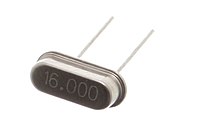
Photo from wikipedia
Abstract Biochar, once amended or released into the soil environment, may alter the transport, fate, and bioavailability of organic contaminants in the environment by adsorption and desorption. In this study,… Click to show full abstract
Abstract Biochar, once amended or released into the soil environment, may alter the transport, fate, and bioavailability of organic contaminants in the environment by adsorption and desorption. In this study, adsorption–desorption of aniline, 4-nitroaniline, phenol, 4-nitrophenol, nitrobenzene, and trinitrobenzene on biochars produced at 700 °C from 5 biomass including wood chips, chitin, cellulose, lignin, and rice straw (i.e., W700, Ch700, Ce700, Li700, and S700, respectively) was investigated to examine the underlying mechanisms for desorption hysteresis of organic contaminants. The desorption hysteresis was dependent on the adsorption–desorption time and should be attributed to the nonequilibrium adsorption–desorption, i.e., it was apparent and an artifact. Moreover, within 2-day equilibration, the desorption hysteresis was observed for trinitrobenzene (with the maximum cross-sectional area of 0.890 nm2) but not for the other organic contaminants with smaller sizes (the maximum cross-sectional area ≤ 0.611 nm2). Similarly, trinitrobenzene had a shorter equilibrium time on Ch700 (15 days) than on Ce700, Li700, and S700 (>30 days) because of the larger pores of Ch700. Diffusion rates (kip2) of trinitrobenzene on biochars were positively correlated with the Raman spectra ID/IG values of biochars (R2 = 0.928) because higher ID/IG values are possibly associated with the looser structure of biochars which having faster diffusion of molecules in pores. The time-dependent desorption hysteresis suggests that the adsorbed organic contaminants by biochars can be re-released into the soil environment for a long period. Thus, the long-term releasing of adsorbed organic contaminants on biochars should be investigated more for assessing the environmental risks of organic contaminants.
Journal Title: Chemical Engineering Journal
Year Published: 2021
Link to full text (if available)
Share on Social Media: Sign Up to like & get
recommendations!